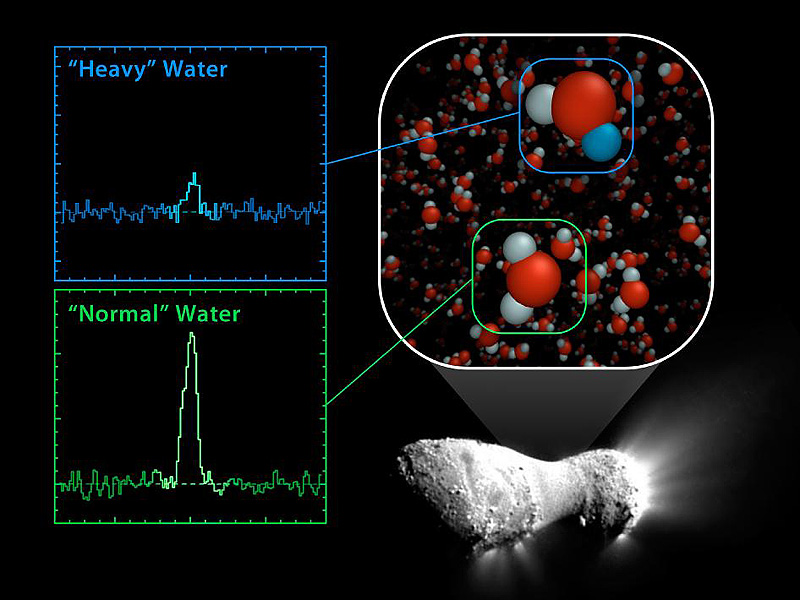Using the Herschel Space Observatory, astronomers have discovered that comet Hartley 2 possesses a ratio of “heavy water” to light, or normal, water that matches what’s found in Earth’s oceans. (Image credit: NASA/JPL-Caltech)
Home Using the Herschel Space Observatory, astronomers have discovered that comet Hartley 2 possesses a ratio of “heavy water” to light, or normal, water that matches what’s found in Earth’s oceans. (Image credit: NASA/JPL-Caltech) Using the Herschel Space Observatory, astronomers have discovered that comet Hartley 2 possesses a ratio of "heavy water" to light, or normal, water that matches what's found in Earth's oceans. (Image credit: NASA/JPL-Caltech)



